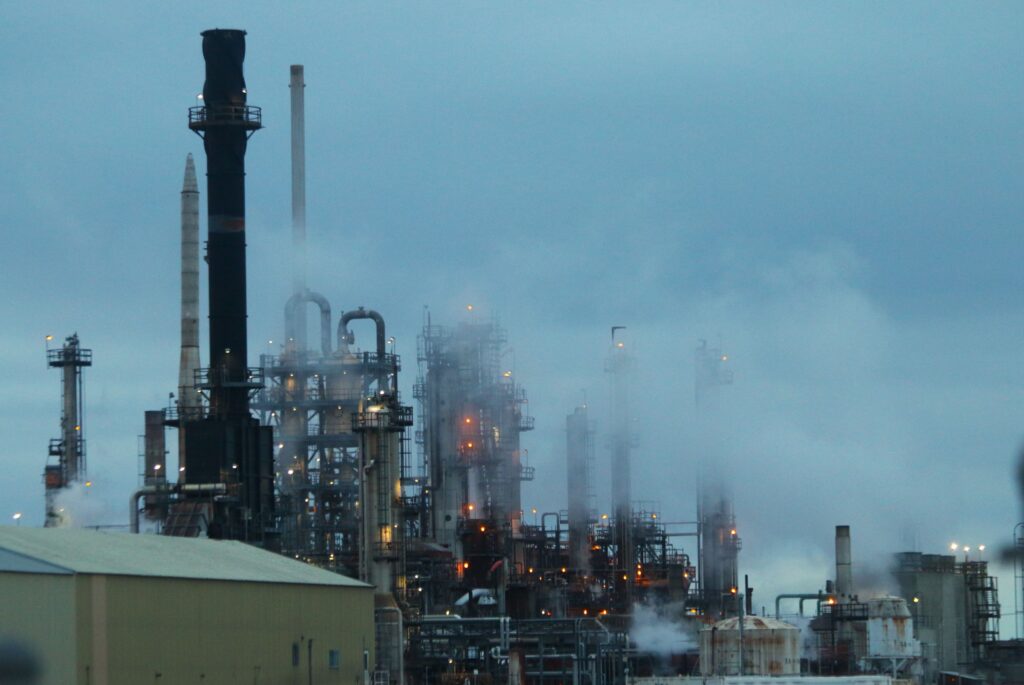By Trish Zornio
Debates are intensifying as to whether Suncor meets state requirements after a new pollution monitoring bill took effect in January. House Bill 1189 was passed during the 2021 legislative session and was signed into law by Gov. Jared Polis.
Under the bill, Suncor was required to install continuous air monitors along the Commerce City refinery perimeter by Jan. 1. But an agreement over program details has still not been reached, remaining in legal limbo after Suncor filed a lawsuit against the Air Pollution Control Division (APCD) of the Colorado Department of Public Health and Environment (CDPHE) last year.
The legal action came after APCD instructed the facility to monitor for additional pollutants and to provide additional public-access data.
A spokesperson for Suncor stated the company made every effort to work with the state before filing legal action, and that Suncor has actively made temporary efforts to meet the new requirements. The spokesperson also indicated that updates to the fenceline monitoring program would take place pending legal outcomes.
Due to the pending litigation, APCD would not comment on whether Suncor was meeting its legal obligations under the bill. Attorney Ian Coghill of Earthjustice, a local environmental advocacy group, said it is clear Suncor is not meeting requirements.
“Suncor is definitely not meeting its obligations under the new law,” Coghill said. “Several of the requirements that CDPHE added to Suncor’s plan have gone into effect, including the requirements that Suncor monitor for 20 total pollutants and have a public website with all of the required functionality up and running. Suncor did not ask the court to temporarily stay these requirements while the suit proceeds, so Suncor should be complying with them. It’s not.”

A letter from APCD to Suncor dated Aug. 12 confirms it required Suncor to monitor 20 pollutants and to provide all data reporting, including
a public-access website, by Jan 1. Suncor has five optical sensor monitors along the fenceline, each tracking three compounds with limited public data access. Other air monitoring efforts highlight ongoing air pollution concerns that could renew public health worries.
Cultivando, a local community group, was awarded nearly $1 million by CDPHE in 2021 after Suncor reached a $9-million settlement for repeatedly violating air quality standards. Cultivando has since partnered with Boulder AIR to establish a fixed air monitoring site alongside a mobile operation in the Commerce City area. Initial findings by the group provoked further debate on the effectiveness of Suncor’s fenceline monitoring, largely regardless of its ability to meet the new bill requirements.
In a community presentation by scientist Dr. Detlev Helmig, the Boulder AIR program revealed detectable levels of multiple pollutants, including a benzene spike registering at over 4 parts per billion (ppb) within the last 30 days.
A document found by the Agency for Toxic Substances and Disease Registry under the Department of Human Health and Services states, “exposure to 0.4 ppb in air over a lifetime could cause a risk of one additional cancer case for every 100,000 exposed persons.”
Helmig noted the differences in findings were due to methodological disparities between Boulder AIR’s tracking and Suncor’s. He suggested Suncor’s monitoring approach is likely to seriously impede their ability to accurately reflect pollutant levels from their facilities that reach surrounding communities.
Among Helmig’s chief concerns were the height and proximity of Suncor’s fenceline monitors to the stacks, which he noted as the main source of air pollutants, and the subsequent likelihood of most pollutants wafting above the monitors undetected only to later fall into neighboring communities. More concerns included a less sensitive pollutant threshold by Suncor given their use of parts per million in public reporting versus parts per billion, a mathematical flattening of pollutant spikes based on Suncor’s use of average pollutant concentrations over hundreds of meters instead of more localized measurements, and the overall monitoring of only a few pollutants.
A Suncor spokesperson confirmed the facility’s monitors employ the detection of three pollutants over hundreds of meters, noting this approach allows Suncor to monitor more of the fenceline.
The Suncor spokesperson also acknowledged that Cultivando’s air monitoring programs “measure[s] the quality of air where people live in a specific neighborhood or geographical area, using technologies to measure compounds from a variety of sources,” a suggestion that Suncor considers anything beyond the fenceline as not conclusively attributable to their facility.
Publicly available pollutant-source modeling by Boulder AIR monitoring suggests much of the pollutant tracking emanates from the Suncor facility direction. As debates continue regarding community safety, Suncor announced it intends to fully reopen after closing in December due to equipment malfunctions and two separate fires. It reopened its plant 2 in February and plans to reopen plants 1 and 3 in the coming weeks.
During this time, Suncor said there may be increased flaring, noise and traffic, but it would try to keep disruptions to a minimum. Suncor is also said it will continue to monitor air quality in the immediate area through CCND Air ccnd-air.com and the fenceline monitoring program suncor.data.spectrumenvsoln.com/.

Be the first to comment